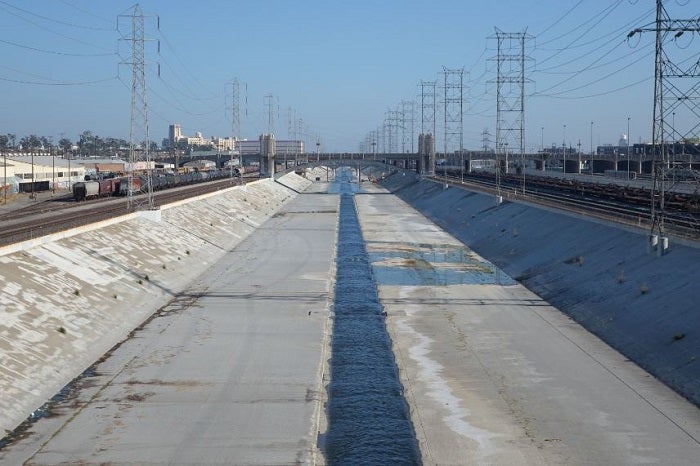
UCLA researchers have looked at how to improve water-quality and increase water-supply with a focus on the City of Los Angeles, which is a necessary step towards realizing 100% locally-sourced water for L.A. County by 2050, and a goal of the UCLA Sustainable LA Grand Challenge.
In the recently released report, LA Sustainable Water Project: Los Angeles River Watershed, researchers studied the urbanized Los Angeles River (LAR) watershed. As part of this comprehensive integrative water management study on the LAR watershed, researchers also examined the three associated water reclamation plants (Donald C. Tillman, LA Glendale, and Burbank) and the underlying Upper Los Angeles River Area (ULARA) groundwater basins to better understand opportunities to improve water quality and increase water supply. The report provides a critical analysis of the River’s past, present, and future water management through the analysis of sixty-years of flow data, extensive watershed modeling, and the evaluation of toxic metal pollutant levels and water reclamation plant discharge volumes in the river and its tributaries. The report lays out the complex relationships between multiple aspects of urban water management, including stormwater management and local water-supply. The LAR watershed has been significantly impacted by pollutants such as metals, bacteria, trash and nutrients, and multiple efforts are occurring in the region to improve water quality through, in part, increasing the volumes of stormwater captured.
This additional stormwater, in combination with full reuse of the wastewater in our region, offers great potential to simultaneously clean-up our local waterbodies and increase our local potential water-supply. However, this UCLA study demonstrates that if Los Angeles maximizes water recycling and stormwater capture and infiltration, the impacts on flows in the LAR will be severe and key decision makers will have to consider tradeoffs. It will be a powerful tool for decision makers and stakeholders who are set to plan the LAR’s future.
In the report, researchers provide an in-depth look at how watershed-scale best-management-practices projects will improve water quality in the LAR watershed and highlights the region’s current and planned projects on water-quality and water-supply.
This study is part of a series of Sustainable LA Grand Challenge Integrated Water Management reports, including the Ballona Creek Watershed and the Dominguez Channel and Machado Lake Watersheds. These reports along with the Los Angeles City-Wide Overview report help provide a path forward for the region to reach the UCLA Sustainable LA Grand Challenge’s ambitious goal of 100% local water in L.A. County by 2050.
The research team included UCLA associate vice chancellor for environment and sustainability Mark Gold, UCLA postdoctoral scholar Katie Mika, and professor Terri Hogue of the Colorado School of Mines (CSM); UCLA professor Stephanie Pincetl and former graduate student Kim Truong, as well as, Elizabeth Gallo, Ryan Edgley, and postdoctoral scholar Laura Read of CSM.
Additional coverage:
What role should the L.A. River play in a future Los Angeles? LA Times, 12 April 2018
More local water for Los Angeles could mean a drier Los Angeles River KPCC, 20 Sep 2017
More local water for Los Angeles could mean a drier Los Angeles River UCLA Newsroom, 19 Sep 2017




